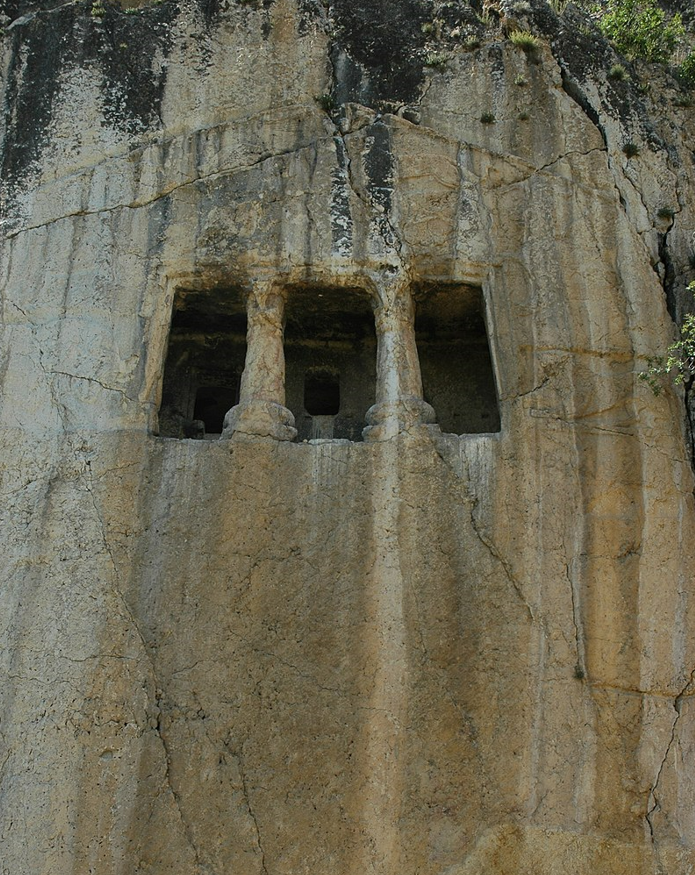Take a quick glance and you might assume it’s just a cavernous inlet in a cliff face, but look closer and you’ll see this is the remains of an ancient tomb adorned with pillars and once-grand carvings. Despite its beauty and uniquenesses, the stunning historical site is rapidly disappearing in the face of neglect and natural erosion.
It’s known as the Kalekapı Tomb at Donalar, located near the town of Taşköprü in Northern Turkey not far from the coast of the Black Sea.
High up in the cliff face, there’s a rectangular inlet fronted by a porch with two thick pillars. Inside, there’s a tomb chamber measuring some 10 by 15 meters (32 by 49 feet). It also reportedly features a hammam Turkish bath, providing some hints about its possible use in ancient times.
It looks like the kind of tomb even Lara Croft would struggle to scale, but there is a simple way to enter: at the top of the cliff, there’s apparently an entrance down a tunnel via a ladder.
Surrounding the porch in the rock face, it’s decorated with a giant relief of carvings, including a man battling a lion, a bull, a griffon-like beast, and perhaps a unicorn. Scholars believe the depiction of these mystical beasts, which are pretty unusual for the region, shows the traces of Hellenistic Greek and Persian culture that was left in this region.
Tragically, the carvings are fading fast. Most recent photographs fail to show any animals in the reliefs, but they are significantly more visible in images taken just a few years ago.

The outer relief of the tomb has faded severely in recent years.
Around 10 kilometers (6 miles) away from the Kalekapı Tomb at Donalar, you can visit the more famous Roman city of Pompeiopolis. However, the rock-face tomb is likely hundreds of years older than these impressive Roman ruins.
Some claim the tomb was built for the chiefs who rose to power on the coattails of the Persian Empire during the late 5th century to early 4th century BCE. Other sources suggest it was built by the Paphlagonians in the middle of the 7th century BCE. Either way, it’s safe to say the tomb is likely around 2,500 years old.
The centuries have not been kind to the tomb – and the past three decades have been even crueler. As you can see in the images, the shape of the pillars has softened and the facades have faded from their former glory.
Lütfi Gültekin, deputy director of culture and social affairs of Taşköprü municipality, recently told Hürriyet Daily News that the past 30 years have seen devastating erosion to the outer relief, which he blames on acid rain and climate change.
However, Gültekin added that local authorities have been trying to foster tourism to the site and encourage further archaeological exploration, which they hope will prompt the government to impose tighter protections and safeguard its future.
Source Link: Ancient Tomb Hidden In Rockface Is Rapidly Fading Into Obscurity